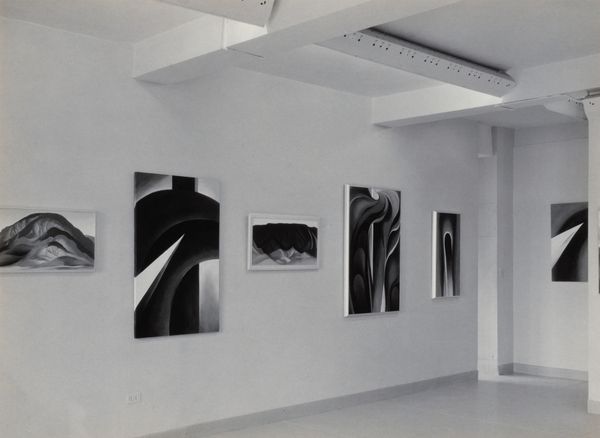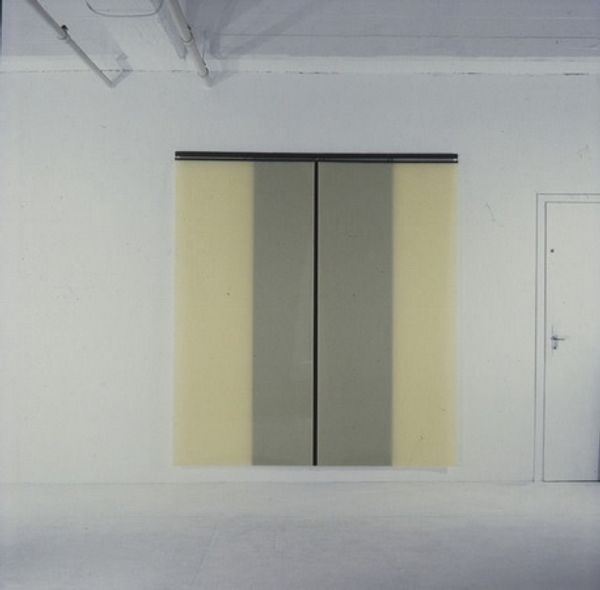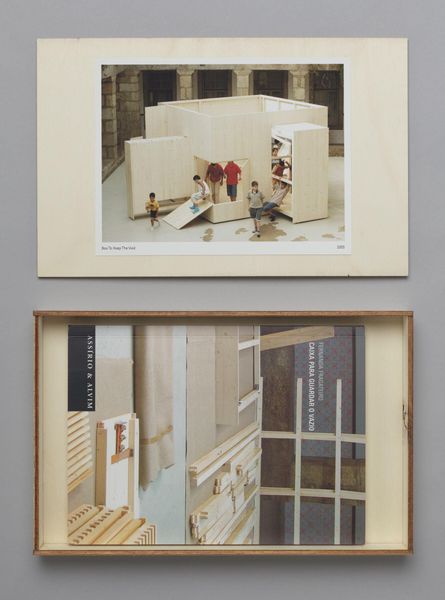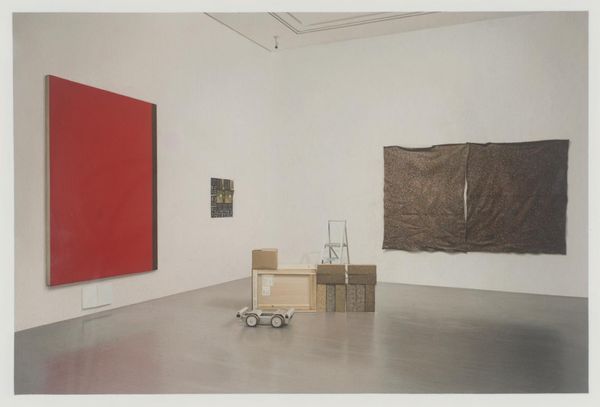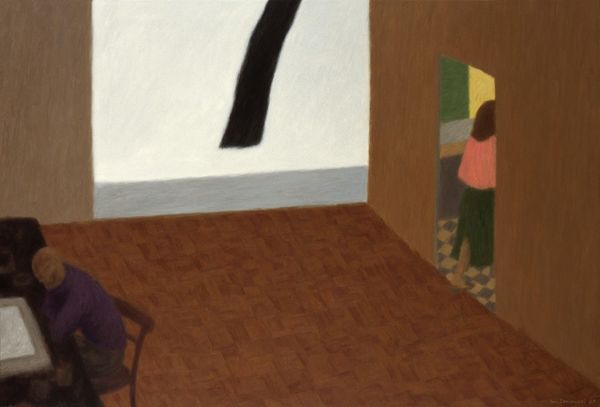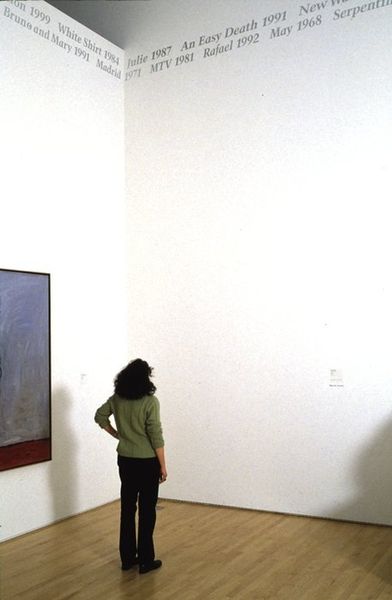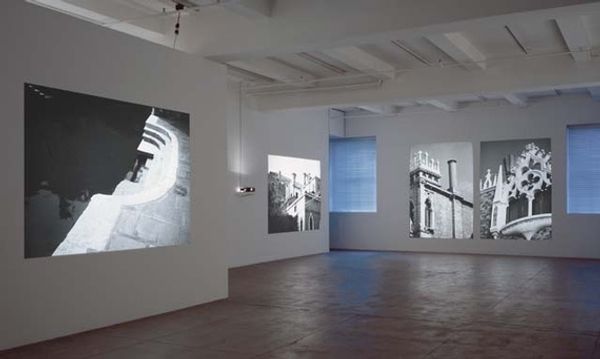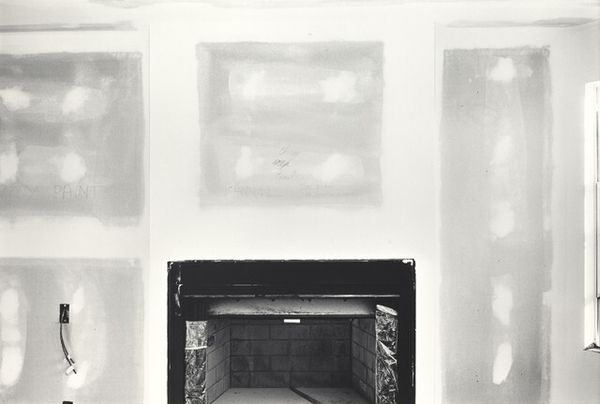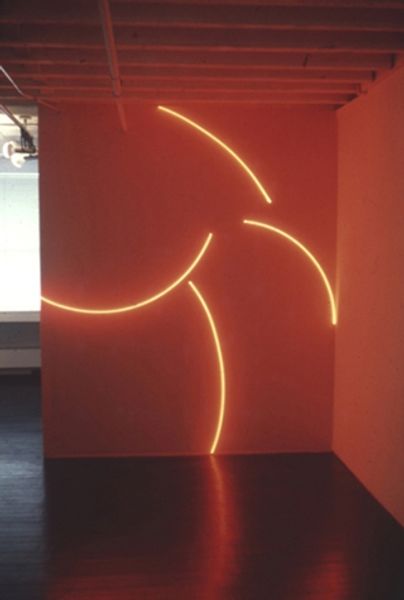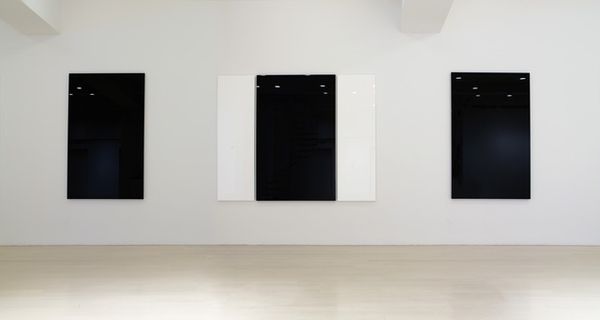
mixed-media, photography, installation-art
#
mixed-media
#
contemporary
#
appropriation
#
photography
#
installation-art
Copyright: Ayse Erkmen,Fair Use
Curator: Ayşe Erkmen created this installation titled *Work, Travel, Life, Style, Sport, Nature* in 1996. It combines photographic imagery with architectural space in a rather unsettling way. Editor: My immediate reaction is unease. The stark white walls, the slightly off-kilter photograph bisected by the doorway… it feels like a stage set for something ominous. The wood flooring seems to be the only element that brings an element of human warmth to this rather strange spatial experience. Curator: I agree. The image itself appears to be an appropriation of a corporate advertisement or stock photograph. It resonates with the aesthetics of consumer culture. Note the almost invasive imposition into what looks like a standard, institutional setting of generic hallways, doors, and walls. Editor: Precisely! The fragmentation is critical. We only see parts of the people in the photograph, forcing a sense of disjuncture. The subjects are involved in what seems like an important meeting; the interruption into our actual space is slightly unnerving, as though their conversation is on pause as long as this architectural division of artwork and institution is apparent to our gaze. The scale is also imposing; how big would you say that the installation’s central element is? Curator: Yes. By strategically placing photographic fragments in unexpected spatial settings, Erkmen creates a visual metaphor about the pervasiveness and influence of images in our contemporary lives, specifically corporate cultural imagery. It speaks to the way we are inundated and formatted through representation to consume and, dare I say, occupy space both mental and actual. Editor: It's clever how the existing architecture functions as a ready-made frame, emphasizing the photographic image's flatness while disrupting its illusionism. I appreciate the play with depth and surface. Erkmen challenges our perception of space and representation by exploiting our established notions of architectural functionality in such environments. Curator: Agreed. Erkmen prompts a meditation on the cultural landscape in our everyday, banal institutional and office places and hallways. I’d agree the artist is challenging us to consider the impact of borrowed or mass cultural information and expectations have on our physical spaces as well. Editor: Thinking of it like that, it also highlights how even “neutral” or supposedly non-descript space is also an arena in which messages play a large role in setting expectations. This photograph of people in an interior could very well be a sign about this specific type of place: one that manages the administration for “Travel” or “Life.” It might signal the corporate expectations in this particular sector or job… Curator: I'm leaving here, reevaluating all borrowed imagery, and rethinking banal public and commercial space as arenas for imposed ideals.
Comments
No comments
Be the first to comment and join the conversation on the ultimate creative platform.
